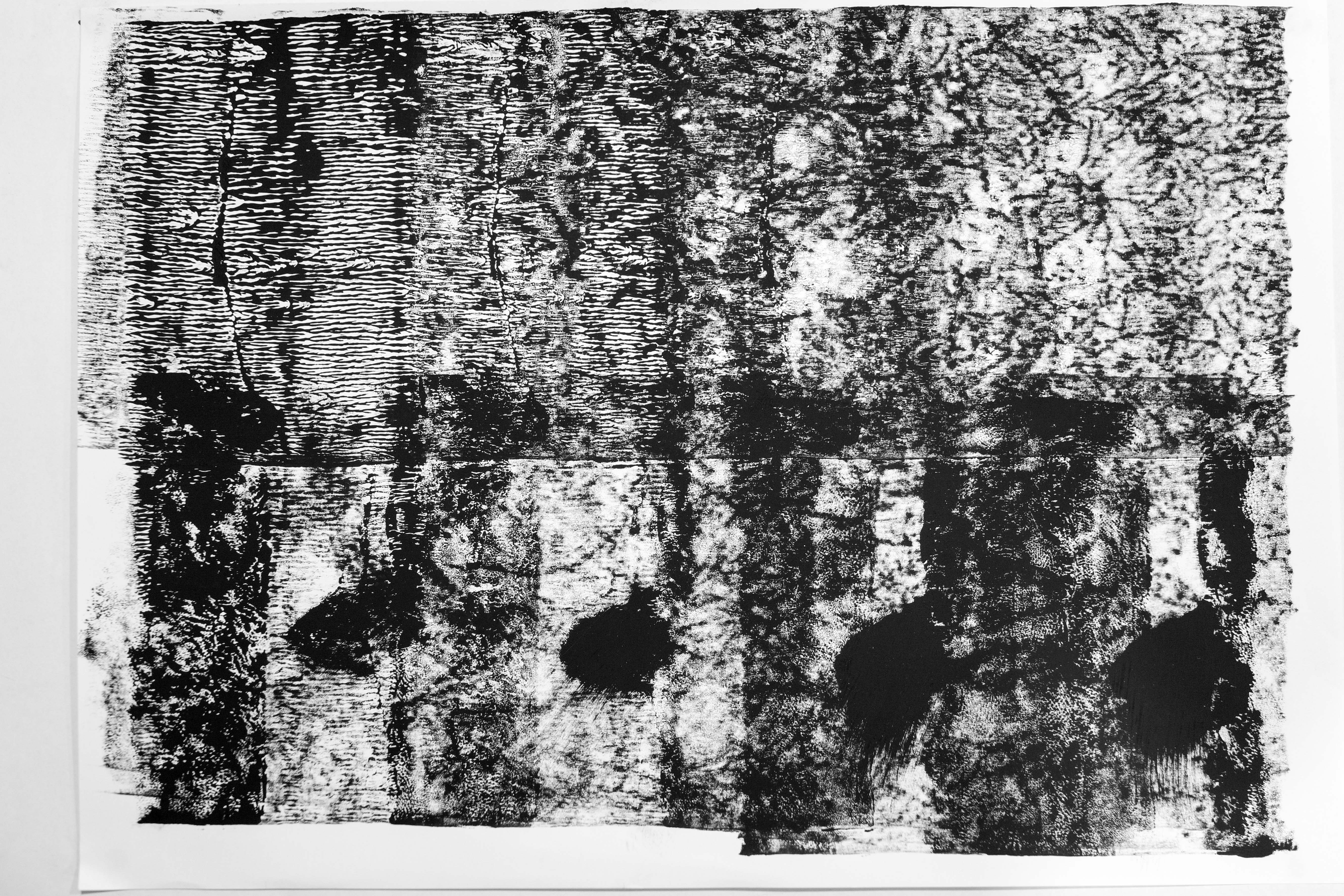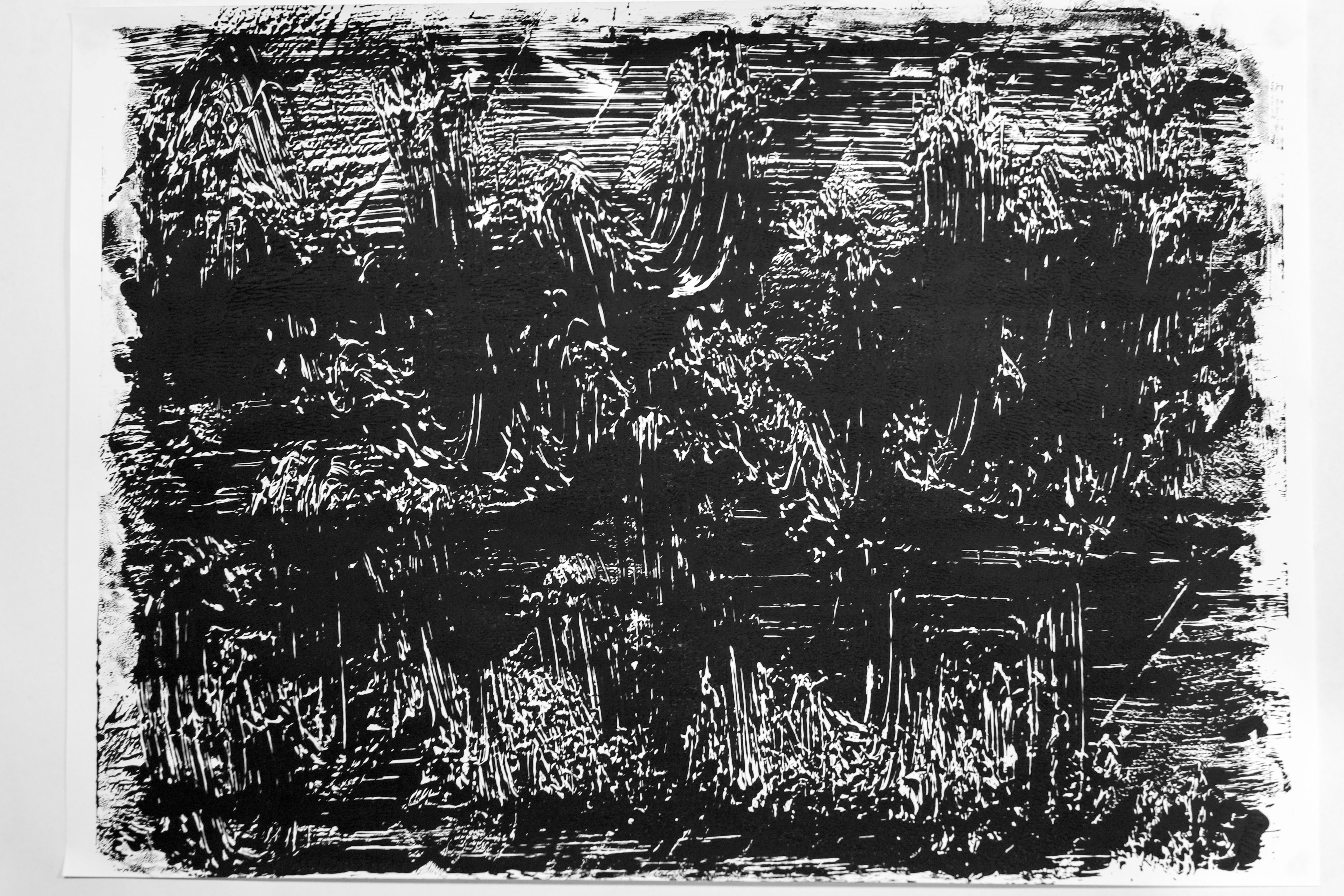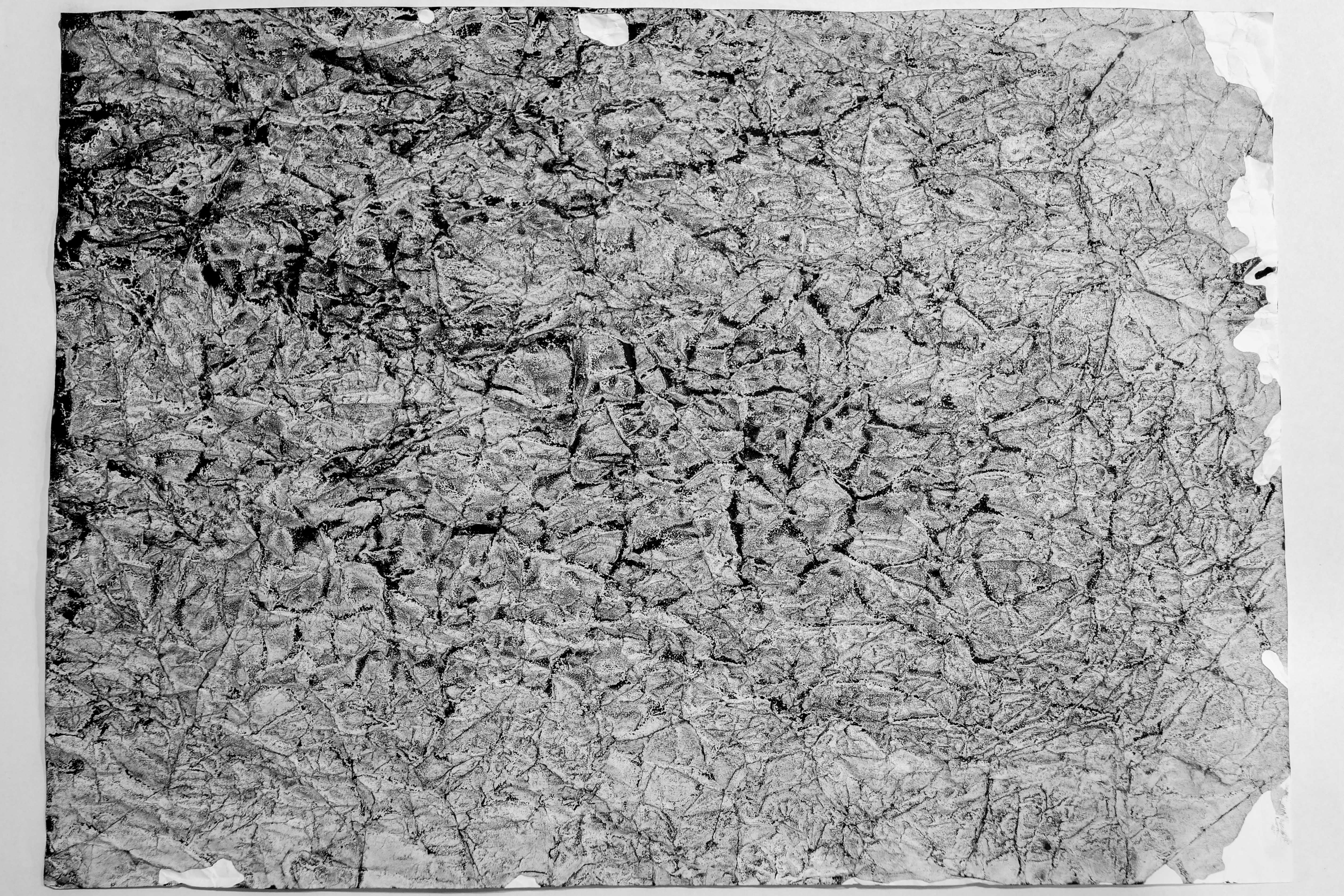





































bits and pieces of me






































A line is a dot that went for a walk…
Initial ideas, process logs and final lines.
Anxious
Idea: Making lines look as though they are actually pacing back and forth nervously and are unable to decide where and when to stop which resembles what someone would do if they were nervous.
Process of creating the line: Created this line by mono printing. Brushing a crushed aluminum foil across the inked surface created the fine white lines and for the thicker black lines, they were created by using the back of a brush to act as the printing tool and drawing the lines on the canvas.
Embarrassed
Idea: Ed Moses’s cubist drawing inspired me to do something similar as the lines actually suggest a sense of shyness like they are actually hiding behind each other. If you look closely, it looks as though the lighter lines are hiding behind the darker lines.
Process of creating the line: Created this line by dipping a wide paintbrush in ink and tapping it with different pressures at different points on the medium to create this lines behind lines effect.
Bizarre
Idea: Think of ways to create a line that is really strange and set me in a mood of uneasiness. Makes me wonder how the markings were created.
Process of creating the line: I decided to use the mono printing method as it allows me to create unique textures, which were otherwise, impossible to create with other mediums and techniques. For this line, I used crushed aluminum foil throughout the entire plate and placed rope randomly throughout to carry out the reductive method to remove some part of the ink before mono printing the textured plate on the medium to create the line below which has multiple strange textures and lines.
Exhausted
Idea: Try to create lines seem as if they are stretched like how one is stretched to their limits when piled with never ending work and gets worn out from them. Can incorporate Yves Klein methodology by directing someone who is exhausted to create the prints for me.
Process of creating the line: Getting Kuang Jun who was drained from all the work at 12am to help me create this print by dipping his hands into ink and following the directions I give him to draw these lines. Managed to come out with lines that looks stretched and suggests that they are exhausted.
Fragile
Idea: Using the automatic technique, froissage. The veined effect from the ink settling on the creased lines will look like cracked glass, which suggests delicacy.
Process of creating the line: Crumpling an a3 sized paper and dipping it in a container of ink before taking it out and letting the ink settle and paper dry for the veined effect.
Systematic
Idea: Agnes’s or Sol Lewitt’s work on lines. For Sol Lewitt’s, his definite and clear instructions on how to create the lines shows a very organized process as to how he creates his art. This way, I will be able to portray a systematic character.
Process of creating the line: For this, I used white ink on black a4 paper. I started off with drawing two lines, which is supposed to represent the outlines of an urban city’s landscape, which usually suggests a well-organized area. Thereafter, I gave myself instructions to include alternating horizontal and vertical blocks on top of and below the lines. I ended it off by adding vertical lines from the top of the paper stretching to just one cm above the top line of the “buildings”.
Lyrical
Idea: Jackson Pollock’s work titled “number 1” inspired me as, with the explicit long and thin webs of ink which shows how swift and forceful the lines were created, it is as if the art is Lyrical. Almost being able to let me feel how excited and energetic Pollock was feeling then.
Process of creating the line: I used a calligraphy brush dipped in diluted ink to create the marks. By immersing myself in loud, classical instrumental music, I allowed myself to just freely create lines across the medium and that is how I created the line for the character, “Lyrical”.
Turbulent
Idea: I was looking through some inking technique and chanced upon the method of marbling. I thought it created very wave-like lines, which can suggest a state of disturbance and hence, I got inspired to try out the marbling effect for this particular character.
Process of creating the line: First, I filled a large container with a shallow level of tap water. Thereafter, I added drips of ink randomly throughout the entire body of water before stirring the level surface ink with the back of the paintbrush to create the effect of a turbulent sea. Created the lines by placing an a3 paper on the surface of the water to allow it to absorb the ink and left the paper to dry. Resulting in the final line as presented.
Nonsensical
Idea: Genuinely wanted to draw one line across the slit and submit it as my line. Cause nonsensical.
Process of creating the line: Consulted Prof Ina about this but she did not seem to be impressed by my idea one single bit so I proceeded to find a mono print of mine which made the least meaning to me and cut it out into my line. This line is nonsensical to me as it was just a side product of my mono printing process to get the industrial paper’s textured imprinted on the plate and I was intending to throw this piece away.
Psychotic
Idea: Create a line, which will suggest that it is done by a person in his normal state of mind but is actually mental instable in the view of other the general masses.
Process of creating the line: using the reductive method, I created the line by placing different types of leaves picked up on my way to school, and used a stick to create different intensity of lines by drawing on the plate and removing parts of the ink. This suggests a psychotic character, as it seems as if it is the work of a mentally unstable person. The leaves are part of nature, which is to suggest that this is the normal behavior of him, but his actions of creating lines so randomly and so intensely at different part of the line is trying to suggest how mentally unstable he is.
Ambiguous
Idea: Mark Bradford’s white painting inspired me to adopt a similar method. I will create a line where there will be two layers of lines present. Firstly, the scratched lines from the canvas at the top, and the lines appearing underneath from the mono print beneath. This will allow the viewer to have several possible interpretations as to which lines they should be concentrating on.
Process of creating the line: First, I made a collage of 5 different mono prints of similar textures, all having distinct vertical lines which is supposed to cause the viewer to have difficulties in distinguishing the boundaries between them. To make the line more ambiguous, I added a piece of tracing paper above the collage to make it even more indistinct by causing the lines to be blurred out.
Spontaneous
Idea: For this particular character, Jackson Pollock’s action painting inspired me to adopt a similar technique to create the line. I intend to randomly make marks on a medium without much control.
Process of creating the line: I used a paintbrush with long frayed bristles to fling diluted ink onto a a3 sized paper. It suggests spontaneity as the only thing I am in control of was which direction I was flinging the paintbrush but I am leaving it largely to uncontrollable circumstances, like how the ink will land on the paper, how much will it splatter and where will it land.
Distracted
Idea: “Shadow” by Andy Warhol, displayed to me a “Distracted” character. It was as though he got distracted halfway through creating the art piece and decided to cover up his mistakes by shading one side entirely black.
Process of creating the line: I inked the mono print plate and created most of the textures by imprinting a crushed aluminum foil on the plate. After which, I set one side of the roller to be lower than that of the other side in order to have the gradient effect. This happens cause one side of the print will have a harder impact on the medium as compared to the other side with less pressure from the roller. Thus, resulting in the end product which is similar to “shadow” and it can suggests a “distracted” character as mentioned above.
Sloven
Idea: Andy Warhol’s “Rorschach” where he used the method of letting ink flow naturally inspired me to adopt his method to bring out a character of carelessness. It is like how a careless person will accidentally knock over a bottle of ink and cause it to spill all over a canvas. I believe this can portray a Sloven character.
Process of creating the line: I held a piece of a3 paper on one hand, vertically. And in my other free hand, poured a container of diluted ink randomly onto the paper to create the line below to suggest the negligent of neatness.
Sensual
Idea: Using marble painting methods as it gives a very pleasant, smooth flowing feel to the sense of sight.
Process of creating the line: For this line, it was rather similar to the line for “turbulent”. The only difference is that, I placed a lower concentration of ink in the water and I intentionally created the waves less aggressively as compared to “turbulent” to allow it to look smoother and more natural.
Aggressive
Idea: Ed Moses got me thinking to do a similar piece of work to his series, which involved his crackle method. His methodology can be used to express the character “Aggressive” as the physical motion behind creating the piece can suggest aggressiveness. He sometimes punched the canvas after the paint dried to exaggerate the cracking effect on his artwork.
Process of creating the line: I experimented with glue and acrylic paint to achieve similar effects whereby I can crack the paint further after it dries but it did not work. So I innovated and created the effects that I wanted before letting the ink and glue dry. To make the effects more exaggerated, I sped up the drying process and made the cracking more obvious by using a hair dryer to heat it and crack it more intensely. Resulting in the end product below.
Awkward
Idea: Having cut out lines from my mono prints and collaging them with gaps in between each of them to suggest a feeling of uneasiness between them.
Process of creating the line: Thought through my initial idea and carried it out but it seems more of being “Systematic” than “Awkward” to me. Hence, I went on to think of a new idea where I used blots of ink to suggest awkwardness. In the final line as shown below, it depicts awkwardness as the single blot of ink to the left of the center of the line seems to be the only one that is not connected to the rest of the inked parts. This portrayed to me a feeling of uneasiness it had with the rest of the ink.
Indecisive
Idea: Collaging multiple mono prints of different textures at different angles to suggest me having conflicting choices of using which exact print to use to express this character.
Process of creating the line: While creating the line, I had a change of idea and decided to use a full piece of mono print as the base and have multiple cut outs of other mono prints pasted on top of it to suggest how undecided I was. As though to suggest how I actually intended to use the piece of mono print underneath ato suggest indecisiveness but halfway through, being undecided, chose to have different variations of the lines that could suggest the character too. Hence, ending up with the final line as shown below.
Monochromatic Marble surface pattern – black, white & grey, print pattern inspiration from Pinterest.